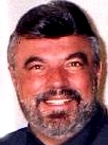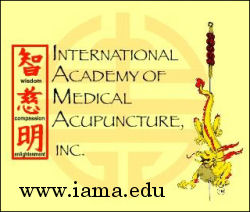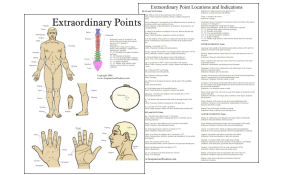Acupuncture & TCM Articles

Acupuncture Articles
by John A. Amaro L.Ac., Dipl.Ac.(NCCAOM), DC
 Dr. Amaro is an internationally known author, lecturer and practitioner beginning his practice of Acupuncture and Chiropractic in 1971. He has led 13 diplomatic Acupuncture study tours of The People's Republic of China escorting more than 500 doctors and practitioners. He has personally studied Acupuncture in nine separate Asian nations. Dr. Amaro is an internationally known author, lecturer and practitioner beginning his practice of Acupuncture and Chiropractic in 1971. He has led 13 diplomatic Acupuncture study tours of The People's Republic of China escorting more than 500 doctors and practitioners. He has personally studied Acupuncture in nine separate Asian nations.
He has received Certification in Acupuncture through the Columbia Institute of Chiropractic in 1973. This was one of the first Acupuncture postgraduate education programs for physicians in North America commencing in 1972.
He has been certified by the Waseda Acupuncture College in Tokyo, Japan in 1974 and graduated from the Chinese Medical Institute, Kowloon, China in 1976. He had previously taken postgraduate studies at the Tai Chung Medical School Taipei, China 1973.
"HUA TUO, MEI HUA, AND PALMER"
CHIROPRACTIC'S ASIAN CONNECTION ?
John A. Amaro L.Ac., Dipl.Ac.(NCCAOM), DC
Ask any chiropractic veteran with 40 or more years of practice to their credit, and they will tell you in the early days of chiropractic, D.D. Palmer was emphatic on the chiropractic treatment of what he referred to as "KIDNEY PLACE, CENTER PLACE AND LOCAL".
Chiropractors in our formative years, were very aware of this concept and in fact it can be referred to in virtually all early chiropractic texts to include Palmers 1910 "Chiropractic Adjuster".
Basically what this cornerstone treatment consisted of, (can I use the word treatment-if you understand my intent ?) was to simply "adjust" in every case, the vertebral articulation of
T 11-12 (which Palmer discovered first) and referred to as KIDNEY PLACE or more affectionately as simply KP. Next was the adjustment of CENTER PLACE which became known by its abbreviation as CP. CENTER PLACE (CP) was and is, the articulation of T 5-6. Palmer had discovered, that these two specific areas of the spine were the key in affecting the entire neurological system and should be acted upon first.
This was followed by the vertebral adjustment of what was known as simply LOCAL. Local referred to the "meric" vertebral level of the involvement. In other words if the lungs were involved, the focus would be on T3, if it were the liver, focus would be placed locally at T7, the same would be true for the bladder at L4-5 and thyroid at C 5-6.
So basically, in the early days of chiropractic, the administration of the adjustment and the effect it produced, was effectively very simple while being simply very effective. The average practitioner from 1910 to 1940 regarded KP CP and LOCAL as law. Regardless of what a patient sought relief from, the early chiropractic practitioner would adjust with "intent", T11-12, T5-6 and whatever vertebral level would be involved based upon either symptomatic response or physiology.

Perhaps the most interesting part of this treatment approach is the fact some 2,500 years earlier, a noted Chinese physician named "Mei Hua" discovered a very similar technique whereby it became one of the most notable treatments ever used by "Masters" worldwide.
The approach was to always in every case, stimulate the acupuncture point which was and is known as "zhong shu or Central Pivot", and "ji zhong or Spinal Center" . These two points relate to what is known today in acupuncture as GV 7 and GV6 respectively. They are located at the vertebral level of T 10-11 and T 11 - 12. The same level that Palmer felt a strong attraction to.
In the Mei Hua system, the next step was to stimulate not acupoints, but the vertebral level of the nerve root of the involvement. The practitioner with a "seven star" needle or other invasive or non-invasive approach would stimulate the spinous, transverse, above, below and all around the vertebrae in question.
Even though it is highly unlikely (or is it) that Palmer would have known about the Mei Hua system, it is extremely interesting that both practitioners developed the same thought 2,500 years apart.
Try this system yourself, with chiropractic adjustments as well as acupuncture point stimulation, in my opinion it is the hallmark treatment approach.
|
